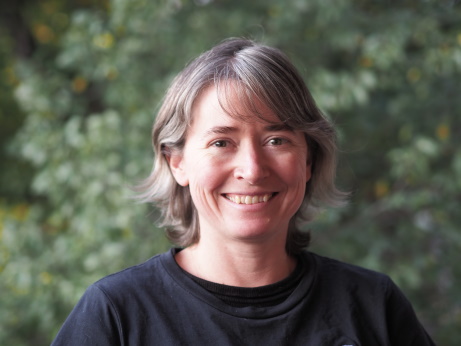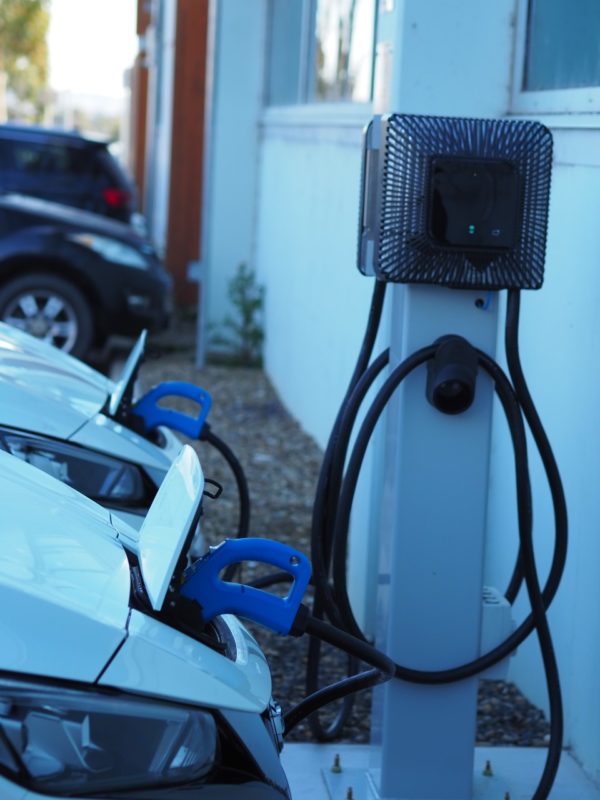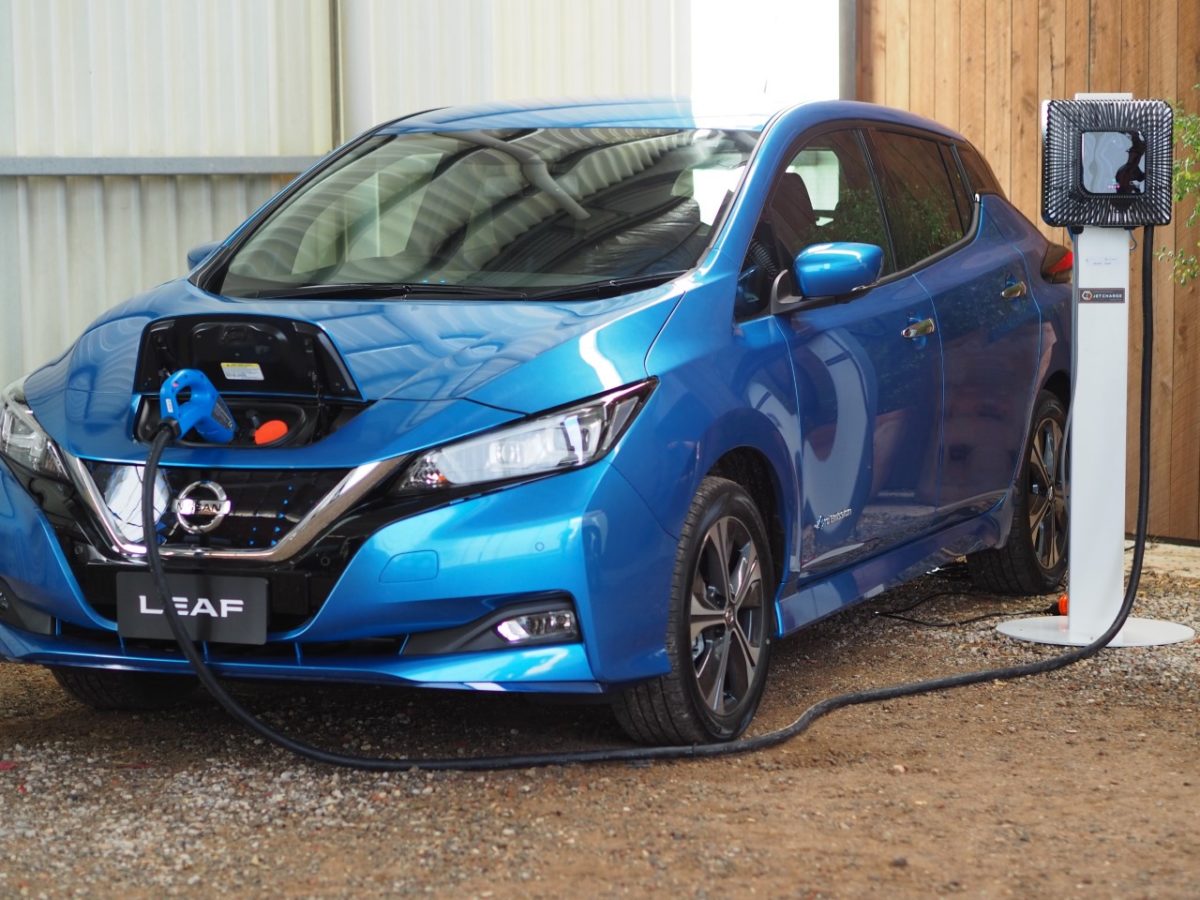Please explain how vehicle-to-grid works?
Vehicle to grid is the idea of tapping into all these electric vehicle (EV) batteries in people’s garages all around Australia to use as a ‘backup energy’ source. We will potentially have this really big distributed energy resource that is really useful and that we could draw on when we need it. In return for allowing their EV batteries to be accessed, vehicle owners would receive earnings or savings of some kind.
Why do we need vehicle-to-grid capability?
Our energy grid needs more flexibility because we’re changing from centralised coal generators to energy being provided by lots of different sources – solar, wind etc.. The grid needs ways to adapt and manage change due to the flux in demand and flux in the energy being produced by these renewable energy sources. Batteries in vehicles would be useful for managing some demands from the grid.
Most of the time, cars are parked not doing anything, particularly overnight when they are charging. Using a special charger, when the grid needs extra power (or less power), we can call on those cars to do that for a short time.

ANU
How would the energy be taken and given back to the car owners?
An intermediary third party would use a centralised digital communication platform that will connect with the chargers that would then pull the energy from, or add energy to, those car batteries. Virtual power plants are already using this centralised digital communication technology together with home battery systems to control their energy outputs.
Because EVs don’t need the entire night in order to charge up, the intermediary could shift the time that charging happens without making any noticeable difference to the vehicle owner.
There would only be a little bit taken from each car battery, but the cumulative energy collected from these cars would offer a good additional supply. The car owner would then, for example, receive a credit on their energy bill for the power that was taken.
As we move to a grid powered by renewable energy, demand response is a low cost way of helping manage the grid; consumers are already being encouraged to do things at different times to help the grid stay up.
What is the potential scale of the energy that we could draw on?
The opportunities for this are tremendous. The battery capacity of 19 million vehicles would likely exceed 1,800 gigawatt hours. That’s equivalent to more than 10,000 “Tesla big batteries”, such as those used to help power South Australia, or five of the new Snowy 2.0 hydro-electric projects.
Why do we need to do this?
To understand the importance of this work, we need to imagine electrifying all of Australia’s 19 million vehicles.
If all Australia’s vehicles were electric they would use more than 60 terawatt hours of electricity a year. That’s around 35% of Australia’s annual electricity consumption.
Still more imposing is the amount of power these vehicles could draw if they all charged at once.

Let’s say, for argument’s sake, there were 1 million, 7.7 kilowatt home chargers in Australia. That’s roughly one in ten properties. If all these cars charged at once, they would add 25% to the national load.
Adding public “fast chargers” and “ultra fast chargers”, say along highways and in car parks, would increase this further.
What are the barriers to this happening?
There are a lot of things that need to coalesce in order for it to be done. The REVS trial has brought up lots of challenges. Part of it is that the standards that V2G chargers need to comply with – the same standards that home solar or battery inverters use – don’t yet fully accommodate the way these chargers operate.
Additionally, the grid needs to be equipped with the right technology so that the network operators know where V2G response is needed. At this stage, some parts of the grid do and others less so – it is somewhat localised as to where this could happen.
Another ANU project, EVOLVE, which we are using as part of the Realising Electric Vehicle-to-grid Services project (REVS) programme, is a software-based approach that is helping solve this problem. Evolve allows network operators to know what is going on at finer level on the grid, so we can see where V2G can work, i.e.. is it OK to inject energy at this exact spot? Some distribution networks have the information to be able to implement a system like this, whereas other networks are less sophisticated. There is lots of activity going on at the moment into the capability of the grid, developing new ways to monitor and manage the grid.
What challenges have you experienced with the REVS project?
At the moment, we are working on the final installation of the chargers. Along the way, we have hit lots of hurdles, for example, the production of the chargers in Spain and then the shipping issues brought on by the pandemic pushed us back. Getting in market participation and implementing and managing the connection requirements was another challenge. The team has had a real uphill battle, however, it has allowed us to see what is needed to make this happen on a larger scale and we have been publishing lots of information about what’s needed.
Where and how is the project taking place?
We have 51 vehicles, Nissan LEAFs, on 11 sites in the ACT. The sites were chosen by different parts of the ACT Government opting in to participate in the trial. The cars are used by ACT Government staff such as community nurses, IT support staff and other public servants. Having the ACT Government initiating the idea along with the energy retailer ActewAGL, network evoenergy, and ANU brought together the right consortium of interested parties. Later, Nissan, charging provider JET Charge and fleet provider SG Fleet joined the REVS consortium.
What do we need to do next to progress this solution?
We need to make this very consumer focused. We need to make the argument to the consumer about why they need to get involved and we need to listen to how they want this to work for them. Do they want to put the energy back into the grid and get paid or would they rather use the technology for their own backup power? More broadly, people are interested in more localised networks where they could just share energy with their family or neighbours, but this isn’t generally possible at the moment. I think the energy industry needs to stop focusing on how it can sell its own ideas to consumers, and give people more space to decide what they want from this kind of technology. Much of the work we are doing at ANU is figuring out in practice how this can be done, working with energy industry stakeholders that are interested in finding out.
Dr Healey will be talking at the upcoming Energy Next, which is a free-to-attend convention aiming to transform the clean energy sector. The event takes place on the 19th-20th July at the ICC.
The views and opinions expressed in this article are the author’s own, and do not necessarily reflect those held by pv magazine.
This content is protected by copyright and may not be reused. If you want to cooperate with us and would like to reuse some of our content, please contact: editors@pv-magazine.com.








By submitting this form you agree to pv magazine using your data for the purposes of publishing your comment.
Your personal data will only be disclosed or otherwise transmitted to third parties for the purposes of spam filtering or if this is necessary for technical maintenance of the website. Any other transfer to third parties will not take place unless this is justified on the basis of applicable data protection regulations or if pv magazine is legally obliged to do so.
You may revoke this consent at any time with effect for the future, in which case your personal data will be deleted immediately. Otherwise, your data will be deleted if pv magazine has processed your request or the purpose of data storage is fulfilled.
Further information on data privacy can be found in our Data Protection Policy.